

|


|
|
1/14 Scale Electric Rally/Touring Car:
Nikko Evo Pro-Line / On-Road Evolution Series
|
Introduced by Nikko circa 2000, the 2WD Evo Pro-Line / On-Road Evolution Series (ES), came assembled RTR with a motor, speed controller and 27Mhz radio system and was available with a number of bodyshell options, including: Audi TT-R, CitroŽn C4, Citroen DS3, Citroen Xsara, Ferrari Enzo, Ford Mustang, Lamborghini Murcielago, Mclaren, Mercedes CLK-GTR, Mercedes AMG, Mini Cooper, Mitsubishi Lancer Evo4, Mitsubishi Lancer VI, Opel Astra, Peugeot WRC 206, Peugeot 306, Peugeot 307, Porsche 911 GT1, Renault Megane, Renault Alpine, Subaru Impreza, Volvo S60: Fast and Furious: Mitsubishi Lancer VI, Nissan 350 Z and many more.
The model is based on a molded plastic chassis, with a gear type differential, coil spring over friction dampers, bushings and ball bearings.
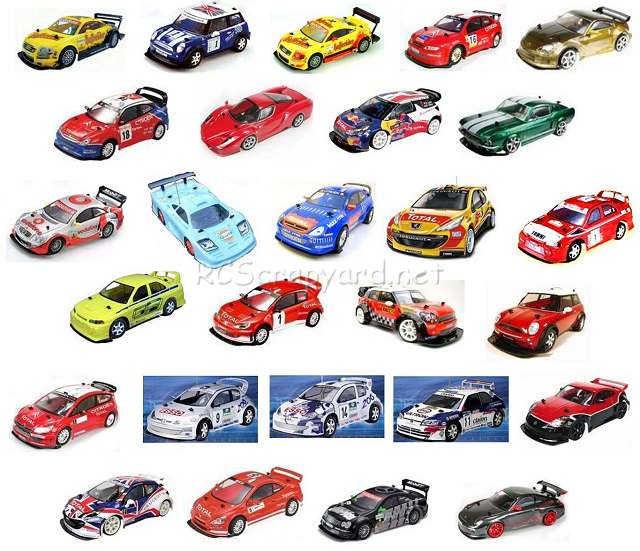
To race the Nikko Evo Pro-Line, it requires a high level of tuning for improved stability when cornering, to keep it on the track and give you more grip under acceleration. Even the smallest change in your cars settings can make a Big difference. Our simple to follow instruction chart will show how to attain the best Set-up for your personal requirements.








|
|
|

★ Nikko Evo Pro-Line Chassis ★
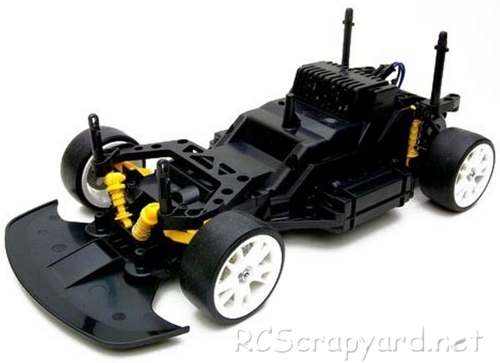
★ Nikko Evo Pro-Line Chassis ★
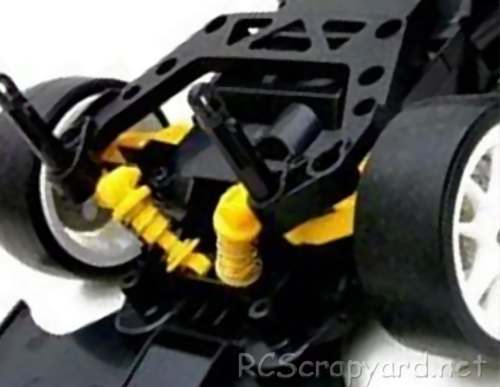
★ Nikko Evo Pro-Line Chassis ★
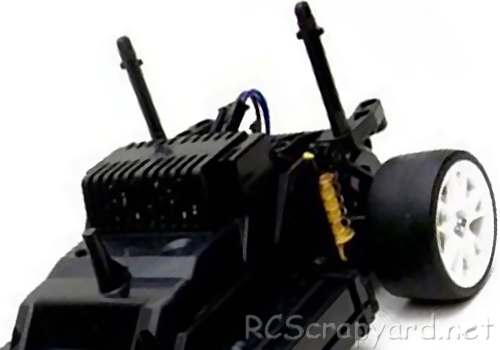
★ Nikko Evo Pro-Line Chassis ★
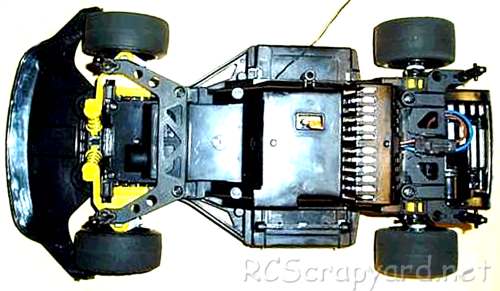
|
Buying a Used Nikko Evo Pro-Line
|
|
Manufacturers and Brands Catalogued, Listed and Reviewed by RC-Scrapyard.
At present, the RC Model Manufacturers, Brands and Distributors covered by us are: ABC Hobby, Academy, Acme Racing, Agama Racing, Amewi, Ansmann Racing, ARRMA, Team Associated, Atomic RC, Axial, AYK, Bolink, BSD Racing, Capricorn, Carisma, Carson, Caster Racing, Cen, Corally, Custom Works, Durango, Duratrax, ECX - Electrix, Exceed RC, FG Modellsport, FS-Racing, FTX, Fujimi, Gmade, GS-Racing, Harm, HBX, Helion, Heng Long, Himoto Racing, Hirobo, Hitari, Hobao, Hong-Nor, Hot Bodies, HPI, HSP, Intech, Integy, Jamara, JQ Products, Kawada, Kyosho, Losi, LRP, Maisto, Mardave, Marui, Maverick, MCD Racing, Megatech, Mugen, New Bright, Nichimo, Nikko, Nkok, Ofna, Pro-Pulse, Protech, PTI, RC4WD, Redcat Racing, RJ-Speed, Robitronic, Schumacher, Seben, Serpent, Smartech, Sportwerks, Step-Up, Tamiya, Team-C Racing, Team Magic, Thunder Tiger, Tomy, Top Racing, Traxxas, Trinity, Tyco, Vaterra RC, Venom, VRX Racing, WLToys, X-Factory, Xmods, Xpress, Xray, XTM, Yankee RC, Yokomo, ZD Racing and Zipzaps. |
|
Hints, Tips and Information
My First National
When I first started in RC, way back in the late 1980s, I would turn up to the weekly club meeting, with my Tamiya Boomerang, Acoms transmitter, two sets of crystals, a couple of 7.2v batteries, a charger and a tool box with a wheel spanner and a few spares. |
|
Hints, Tips and Information
Driving On Road
The basic driving style most commonly used for all forms of on road, tarmac and carpet racing, involves using the full width of the road available, and cutting each apex as tight as possible, whilst keeping complete control of the car on the track. The style, often referred to as "Rounding" looks quite simple to those watching, but to get it right needs good hand eye coordination and lots of practice. |
|
RC Models:
|
Radio & Motors: |
Other
Accessories: |